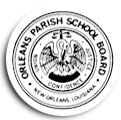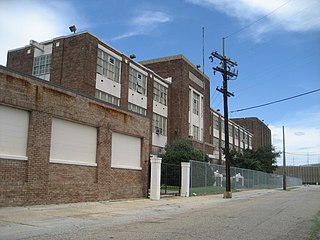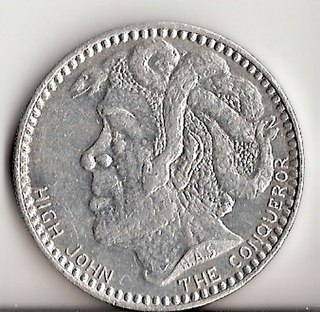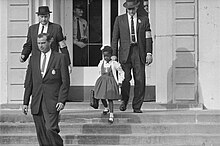
The holiday of Mardi Gras is celebrated in southern Louisiana, including the city of New Orleans. Celebrations are concentrated for about two weeks before and through Shrove Tuesday, the day before Ash Wednesday. Mardi Gras is French for Fat Tuesday, the season is known as Carnival and begins on King's Day, January 6, and extends until midnight before Ash Wednesday. Club, or Krewe, balls start soon after, though most are extremely private, with their Kings and Queens coming from wealthy old families and their courts consisting of the season's debutantes. Most of the high society Krewes do not stage parades. As Fat Tuesday gets nearer, the parades start in earnest. Usually there is one major parade each day ; many days have several large parades. The largest and most elaborate parades take place the last five days of the Mardi Gras season. In the final week, many events occur throughout New Orleans and surrounding communities, including parades and balls.

Carrollton is a historic neighborhood of Uptown New Orleans, Louisiana, USA, which includes the Carrollton Historic District, recognized by the Historic District Landmark Commission. It is the part of Uptown New Orleans farthest upriver while still being easily accessible to the French Quarter. It was historically a separate town, laid out in 1833 and incorporated on March 10, 1845. Carrollton was annexed by New Orleans in 1874, but it has long retained some elements of distinct identity.

Ruby Nell Bridges Hall is an American civil rights activist. She was the first African American child to attend formerly whites-only William Frantz Elementary School in Louisiana during the New Orleans school desegregation crisis on November 14, 1960. She is the subject of a 1964 painting, The Problem We All Live With, by Norman Rockwell.

The Ninth Ward or 9th Ward is a distinctive region of New Orleans, Louisiana, which is located in the easternmost downriver portion of the city. It is geographically the largest of the 17 Wards of New Orleans. On the south, the Ninth Ward is bounded by the Mississippi River. On the western or "upriver" side, the Ninth Ward is bounded by Franklin Avenue, then Almonaster Avenue, then People's Avenue. From the north end of People's Avenue the boundary continues on a straight line north to Lake Pontchartrain; this line is the boundary between the Ninth and the city's Eighth Ward. The Lake forms the north and northeastern end of the ward. St. Bernard Parish is the boundary to the southeast, Lake Borgne farther southeast and east, and the end of Orleans Parish to the east at the Rigolets.

The Orleans Parish School Board (OPSB) governs the public school system that serves New Orleans, Louisiana. It includes the entirety of Orleans Parish, coterminous with New Orleans.

Central City is a neighborhood of the city of New Orleans. It is located in the 11th Ward of New Orleans in Uptown, just above the Garden District, on the "lakeside" of St. Charles Avenue. A subdistrict of the Central City/Garden District Area, its boundaries as defined by the City Planning Commission are: MLK Boulevard, South Claiborne Avenue and the Pontchartrain Expressway to the north, Magazine, Thalia, Prytania and Felicity Streets and St. Charles Avenue to the south and Toledano Street, Louisiana Avenue and Washington Avenue to the west. This old predominantly African-American neighborhood has been important in the city's brass band and Mardi Gras Indian traditions.

The McDonogh Three is a nickname for three African American students who desegregated McDonogh 19 Elementary School, in New Orleans on November 14, 1960. Even though school segregation had been illegal since the Brown v. Board of Education decision in 1954, no states in the American Deep South had taken action to integrate their schools.

The William J. Fischer Housing Development, better known as the Fischer Projects, was a housing project in Algiers, New Orleans, Louisiana, United States. It was known notoriously for a series of high-profile murders in the 1970s and 1980s. It was also the last conventional public housing development constructed in New Orleans and originally consisted of a 13-floor high-rise and fourteen 3-floor units. The area has been undergoing redevelopment since about 2004 and currently none of the original low-rise buildings remain. The development is located along Whitney Avenue in the Algiers area of the city's west bank, which is part of the 15th Ward and is named for William J. Fischer who served as chairman of HANO in the 1950s. The property is now converted to a small low-income housing development.
Ruby Bridges is a 1998 television film, written by Toni Ann Johnson, directed by Euzhan Palcy and based on the true story of Ruby Bridges, one of the first black students to attend integrated schools in New Orleans, Louisiana, in 1960. As a six-year-old, Bridges was one of four black first-graders, selected on the basis of test scores, to attend previously all-white public schools in New Orleans. Three students were sent to McDonogh 19, and Ruby was the only black child to be sent to William Frantz Elementary School.
Barbara Henry is a retired American teacher most notable for teaching Ruby Bridges, the first African-American child to attend the all-white William Frantz Elementary School, located in New Orleans.

The Problem We All Live With is a 1964 painting by Norman Rockwell that is considered an iconic image of the Civil Rights Movement in the United States. It depicts Ruby Bridges, a six-year-old African-American girl, on her way to William Frantz Elementary School, an all-white public school, on November 14, 1960, during the New Orleans school desegregation crisis. Because of threats of violence against her, she is escorted by four deputy U.S. marshals; the painting is framed so that the marshals' heads are cropped at the shoulders, making Bridges the only person fully visible. On the wall behind her are written the racial slur "nigger" and the letters "KKK"; a smashed and splattered tomato thrown against the wall is also visible. The white protesters are not visible, as the viewer is looking at the scene from their point of view. The painting is oil on canvas and measures 36 inches (91 cm) high by 58 inches (150 cm) wide.

Booker T. Washington High School is a public charter high school in New Orleans, in the U.S. state of Louisiana.
Crescent City Schools is a charter management organization (CMO) based in New Orleans, Louisiana. Crescent City Schools is part of a movement in New Orleans to transform one of the worst school systems in the country. In the fall of 2010, Crescent City Schools received a Type 5 charter from the state of Louisiana to transform a failing school in New Orleans. In February 2011, Crescent City Schools was assigned to Harriet Tubman, a K-8 school in Orleans Parish, and assumed operations there on July 1, 2011. In 2012, the organization was awarded the expanded charter for Akili Academy of New Orleans and the charter for Paul B. Habans Elementary. Habans opened as Paul Habans Charter School in July 2013.

The New Orleans school desegregation crisis was the period of intense public resistance in New Orleans that followed the 1954 U.S. Supreme Court ruling in Brown v. Board of Education that racial segregation of public schools was unconstitutional. The conflict peaked in 1960, when U.S. Circuit Judge J. Skelly Wright ordered that desegregation in New Orleans begin on November 14 of that year.
The history of the 1954 to 1968 American civil rights movement has been depicted and documented in film, song, theater, television, and the visual arts. These presentations add to and maintain cultural awareness and understanding of the goals, tactics, and accomplishments of the people who organized and participated in this nonviolent movement.
G. W. Carver High School is a high school in the Desire Area, in the Ninth Ward of New Orleans. It is a public charter high school.

The Carver Theatre is a theater located in New Orleans, Louisiana. The theatre was originally built in 1950 and was used for concerts, plays, off-broadway shows, films, conventions, graduations, Mardi Gras balls, dance recitals, corporate events and private parties.

Mardi Gras Doubloons are Mardi Gras throws shaped like coins that commemorate various Mardi Gras Krewes. They are typically made of aluminum and are thrown from floats in carnival parades. The first doubloons used as throws from parades of Mardi Gras Krewes date to 1960, and these early doubloons are collectible.

McDonogh 19 Elementary School is an American elementary school located at 5909 St. Claude Avenue in the Lower Ninth Ward of New Orleans, Louisiana. Along with William Frantz Elementary School, it was involved in the New Orleans school desegregation crisis during 1960.
Leona Tate is an American activist, Civil Rights pioneer, and community advocate from New Orleans. She was one of the first Black children in the United States to desegregate a public school.


















